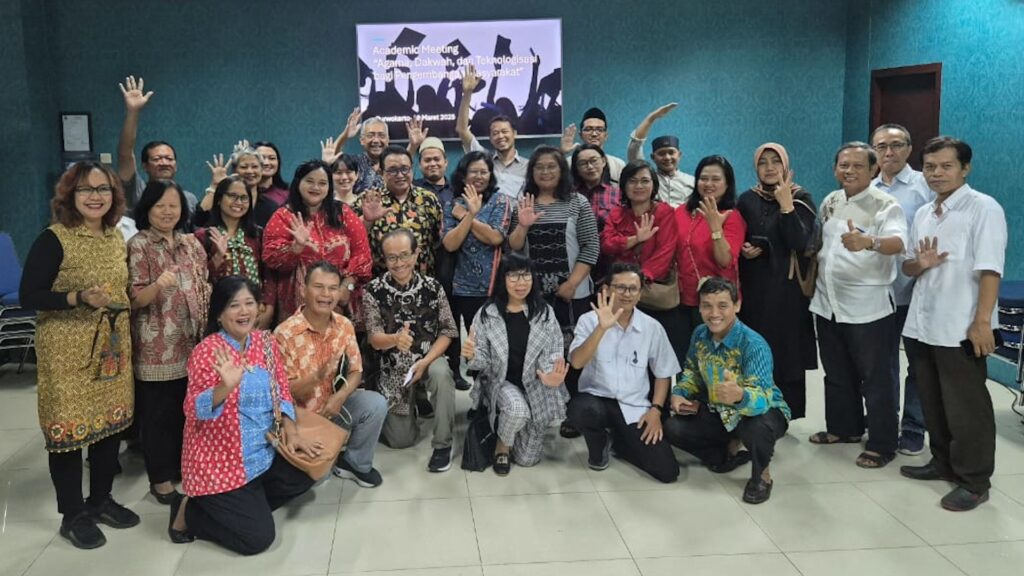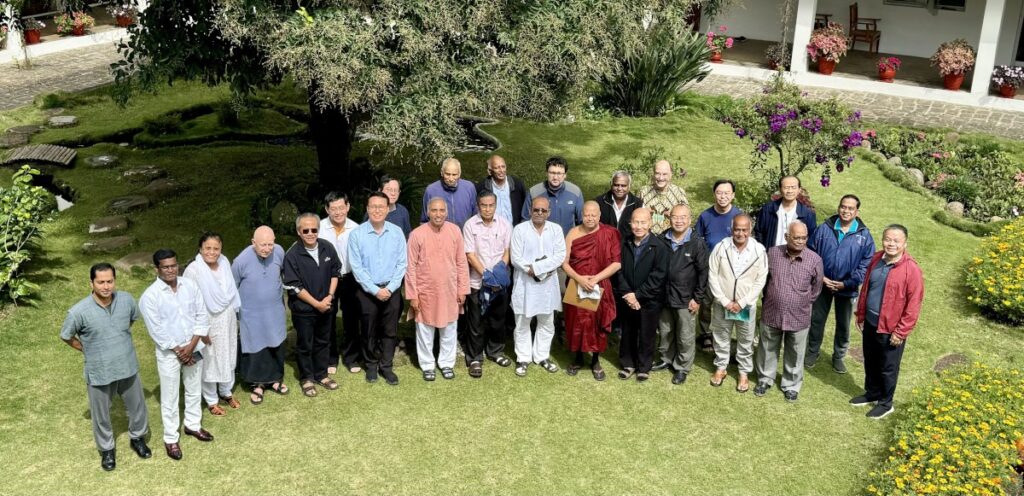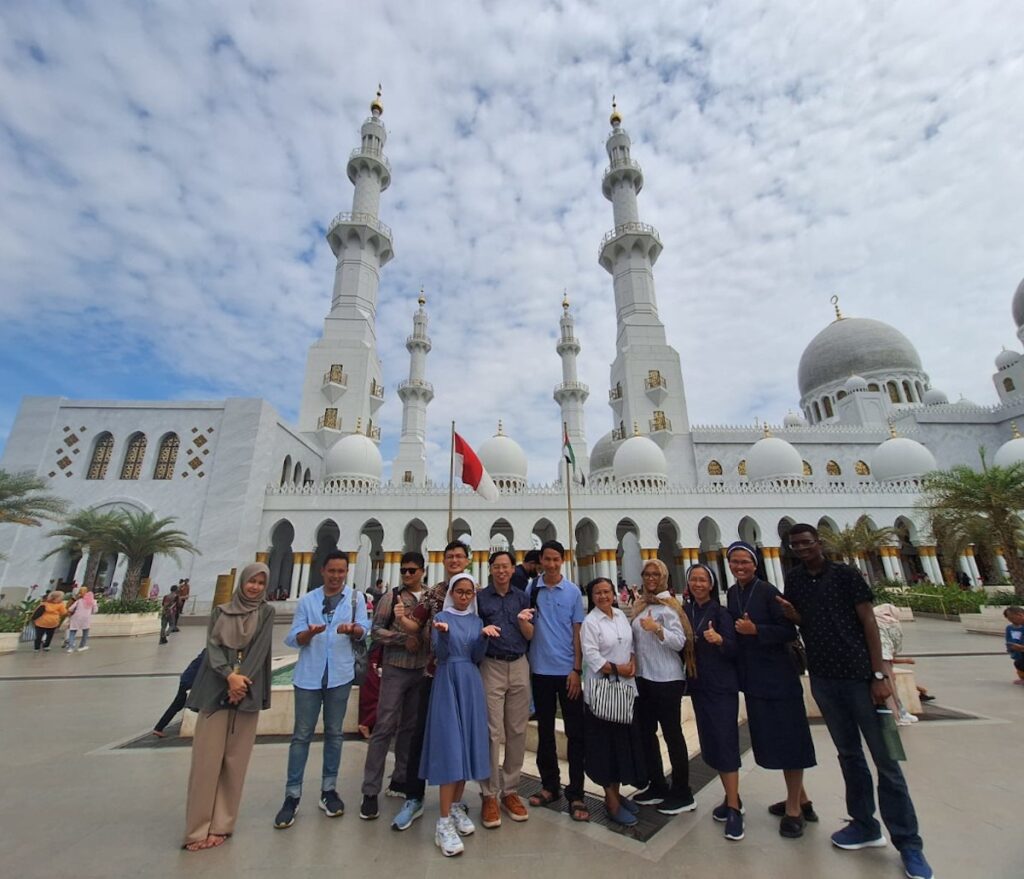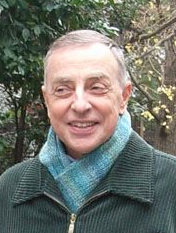
Personal Background
I came to Japan in 1967 at the age of 22 and began the study of the Japanese language at the Jesuit language school in Kamakura. Since Kamakura is quite famous for Zen temples, many of my classmates began doing Zen. However, I did not. After language study and then philosophy at Sophia University I was sent for regency to our high school in Kamakura. I began to do Zen on my own, but soon gave it up as I became very busy with the activities of a scholastic regent at a high school.
After theology I became the secretary to the Provincial. During that time the Japan Province hosted a tertianship with Zen incorporated into the program. Although I did not attend that tertianship, doing the paperwork for it aroused my interest in Zen again. So it was that at this time at the age of 33 once again I began to do Zen, and from that time on to the present I have continued.
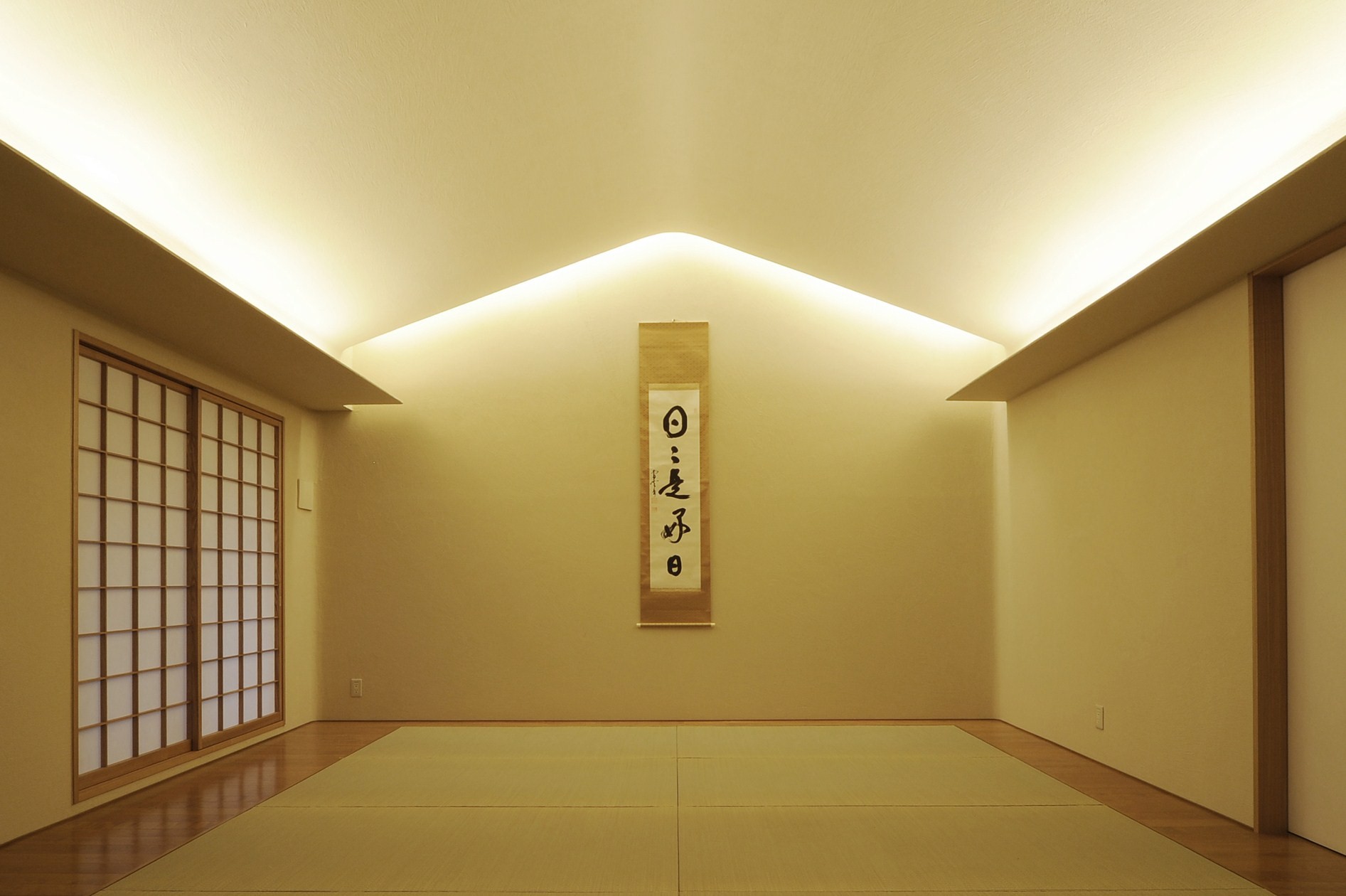
In summary, during my first 10 years in Japan I did not practice Zen. After starting Zen in earnest, during the first 10 years in my Zen practice I was consistent with daily sitting and several sesshin a year but I was off and on with regard to receiving weekly/monthly guidance. However, for the last 25 years I would characterize my practice as that of a serious lay person: sitting at least for 30 minutes a day, participating in zazenkai (one day sittings, where I receive direction from the Roshi) four or five times a month, and participating in sesshin, four or five times a year.
About the Sanbô Kyôdan [2]
The Sanbô Kyôdan is a religious corporation recognized by the Japanese Ministry of Education and Culture. It was founded in 1954 by Yasutani Hakuun who continued to try to synthesize the Soto and Rinzai branches of Zen as his own master, Harada Sogaku, had begun to do. Yasutani Roshi’s successor was my first Zen master, Yamada Koun Roshi. The Sanbô Kyôdan is a lay organization with no affiliation to any of the major sects of Zen in Japan. However, partly due to the influence of Fr. Lassalle, it has been very influential in the West. As one commentator has noted: “the influence of the Sanbôkyôdan on Western conceptions of Zen has been far out of proportion to its relatively marginal status in Japan.”[3]
The training program of the Sanbô Kyôdan begins with introducing the beginner to sitting practice, teaching the correct posture and how to count one’s breaths. After this introductory period, which might last from one to four months, depending on how frequently one attends the zazenkai, the beginner becomes a disciple of the Roshi. At this point the Roshi usually assigns the Koan Mu for practice.
The Koan Mu
This Koan is one of the oldest and most famous of the Zen Koans although the “sound of one hand clapping” is probably known more popularly. It is quite simple. The 8th century Chinese Zen Master, whose Japanese name is Jôshû, is asked by a monk whether or not a dog has the Buddha nature. He replies with one syllable, one ideograph, Mu (無) which can mean “nothing.”
”A monk asked Jôshû in all earnestness, ‘Does a dog have Buddha nature or not?’ Jôshû said, ‘Mu!’”[4]
In former times the beginner was taught how to sit and then pretty much left on his own with no explanation of how to deal with this Koan. The usual process for most would be first to try to deal with the meaning of Jôshû’s answer logically. “Buddha nature is so great it could not possibly be in a dog.” “Buddha nature is everywhere so it must also be in a dog.” “Jôshû is saying both yes and no to the question.” And so on and so on. Eventually, since the Roshi would not accept such answers, the practitioner would get frustrated and begin to just sit with Mu without any thinking at all. This is the correct direction for solving this Koan.
However, as an adaptation to contemporary beginners, the Roshi of the Sanbô Kyôdan instruct their disciples to forego those “preliminaries” and simply absorb oneself in Mu from the beginning by repeating it quietly and internally with each exhalation. The aim of this practice has been expressed concisely by the 12th century Japanese Zen Master, Dôgen: the purpose of Zen is to find one’s true self; the way to this goal is to forget the self. This forgetting is accomplished by totally absorbing oneself in the practice of Mu without thinking.
Some Psychological Aspects of Working on the Koan Mu
I have written elsewhere about psychological research on Zen[5] and its possible application to the field of therapy.[6] Here I wish to write about some of my own personal “psychological” experiences. As I noted in the introduction, I use the word “psychological” to distinguish these experiences from authentic Zen experiences which must be confirmed by the Roshi. The experiences I will touch upon might be characterized as some side effects of the practice of Zen.
- Posture – In the early stages of practice I had to work quite hard to achieve the proper position, the full lotus sitting position. It took me several years to be able to do this posture “comfortably.” I can remember the morning when I was finally able to do back-to-back sittings of an hour’s length each. Subsequently I was able to use the full lotus posture for an entire sesshin. The struggle with the posture and the subsequent satisfaction of achieving it were actually a distraction from the work on Mu, since, far from forgetting the self, the self was in the forefront of this experience. From this experience it was easy to see how egoism can creep in and take over the simplest acts.
- Repressed Memory – My mother died when I was a second year novice. I had many feelings of guilt connected with this event. I was unable to cry at the time, partly because of a mistaken idea of how a religious should handle emotions. I had also reproached myself for not going to visit her more often. Shortly after my ordination, Fr. Tony de Mello, S.J., came to Japan, and I took part in one of his group therapy programs. He skilfully worked me through this problem, and I thought that it had been settled. However, several years after that, while working on the Koan Mu, a memory came back that had been repressed. It was from the time of my last visit. My mother was in much pain and before I left she asked me to kiss her. Although I did so, of course, my first spontaneous reaction was one of repugnance to do so. It had probably been this spontaneous reaction, later repressed, more than anything else, that had been the source of my guilt. The focus of attention on Mu in a state of non-thinking weakened the defence mechanism of repression and allowed this memory to come forward. It was a very helpful experience for me, but from the standpoint of Zen practice, not an authentic Zen experience.
- Frustration/Acceptance – I worked on the Koan Mu for a total of 14 years. At first the novelty kept my spirits up but eventually frustration began to grow at not being able to solve it to the satisfaction of the Roshi. This actually contributed to a mild depression which I suffered one summer. However, with continued practice, even though still not being able to solve the Koan, psychologically I moved to a better space, one of acceptance and letting things be as they are. This was expressed in a natural change of practice from Mu to what is called in Japanese “shikantaza”, usually translated as “just sitting.” It means to sit without any desire of solving anything or achieving anything. Before continuing with other Koans after Mu, I did this “just sitting” for seven years. This whole experience, easily and usefully applied to everyday life, was once again a helpful psychological side effect of working on the Koan Mu. I had reached an experiential grasp of the second part of the Serenity Prayer, to accept what cannot be changed. A conceptual understanding of this second phrase of the Serenity Prayer can be helpful. However, an experiential grasp of it is deeper and more long lasting.
Non-specific Factors
The three experiences described above can be seen as a result of factors not specific to Zen or limited to working on the Koan Mu. Insight into one’s egoism, recovery of repressed memories, and learning to accept things the way they are, could be the fruit of many different types of meditation or other psycho-spiritual disciplines. In that sense these experiences are not really sufficient motivation to continue with the practice of Mu. Likewise, Mu is quite similar to the AUM of Yoga, often used as a mantra for meditation. In fact, use of the so-called “liquid” consonants, of which “m” is one, is quite frequent in many forms of meditation. So what is specific to the Zen practice of Mu?
Specific Factors
I think it is the unique combination of two factors. The first is the typical oriental method of training, described so well by Herrigel[7]. One does the same thing over and over, in his case traditional Japanese archery, with no thought to accomplishing a goal. Rather one puts his/her ego aside to follow intently the directives of the master. The second factor is the personal one-on-one direction from the Roshi who scolds, encourages, and makes sure one stays on the right path to solving the Koan Mu. The first factor is simplicity itself, simply repeating Mu with each breath. It is because of this simplicity that one can do it for hours, days, and years. There is nothing to be learned, mastered, or achieved, and so nothing to become tired of or confused about. The second factor is more complex because it is the peculiar relationship of each disciple with the Roshi. As all human relationships, this varies according to mood, situation, the passing of time, and so on. However, this direction is integral to the practice of Zen and without it, it is no exaggeration to say, that there is no Zen. Practicing Mu on one’s own can be a helpful exercise in mental relaxation or concentration, but it is not Zen.
Integration of Zen with Christian Spirituality
This topic has been and will continue to be the subject of many articles and books. Here I only add a personal note from my own experience. In Christian spirituality we emphasize the Scripture as a way to know Christ and develop a personal relationship with him. We also emphasize that this process is carried on within the tradition of the Church. One element I find lacking here is “what I am experiencing right now”. It is this element which I think that Zen in general, and the practice of Mu in particular as well as other koans, can contribute to Christian spirituality. Too much emphasis on Scripture and the tradition of the Church can turn one’s attention too much to the past. Adding the element of “what I am experiencing right now” makes both come alive in the present.
Conclusion
I am not an advocate of so-called Christian Zen[8] or Zen Christianity[9]. In the former, for instance, one might be directed to use the name of God instead of Mu or be given koans from the Bible, like the grain of seed dying and then bearing fruit. In the latter proponents urge a syncretizing which would yield a new Christian denomination. However, I believe that many Christians can become better Christians by doing Zen just as it is.
[1] Enomiya-Lassalle, H. 1992 The Practice of Zen Meditation. London: The Aquarian Press.
[2] Sanbô Kyôdan HP http://www.sanbo-zen.org/
[3] Sharf, R.H. (1995) Sanbôkyôdan Zen and the Way of the New Religions. Japanese Journal of Religious Studies. V.22, n.3-4, pp. 417-458.
[4] Yamada, K. (1979) Gateless Gate. Tucson: The University of Arizona Press, p. 11.
[5] Cusumano, J. & Moridaira, N. (1993) Zen Therapy for the Therapist. The Psychological Report of Sophia University, V. 17, pp. 85-90.
[6] Cusumano, J. (2004) No-self Counseling: An Application of Zen to Counseling Theory. International Journal of Counselling and Psychotherapy, V. 2, pp. 17-26.
[7] Herrigel, E. (1999) Zen in the Art of Archery. New York: Vintage Spiritual Classics
[8] Kadowaki, J. (2002) Zen and the Bible. New York: Orbis Books.
[9] Sato, M. (2007) Zen Kirisuto-Kyo no Tanjô [The Birth of Zen Christianity]. Tokyo: Iwanami Shoten.


